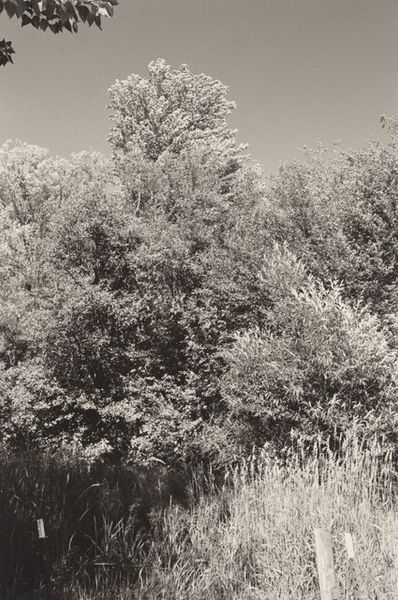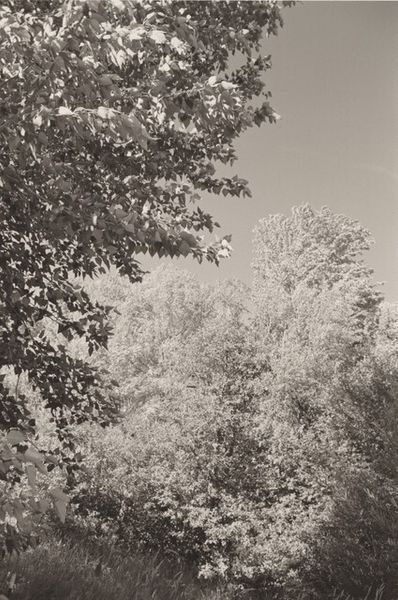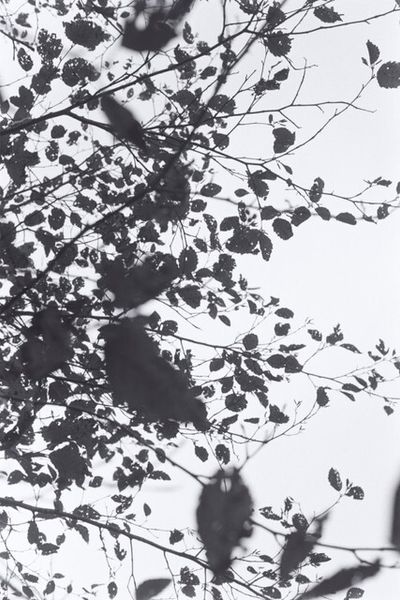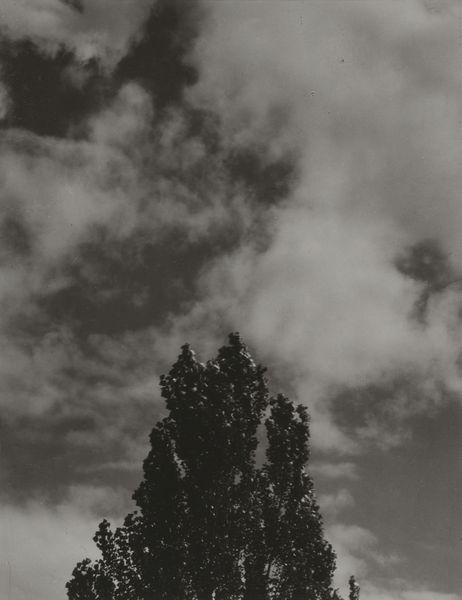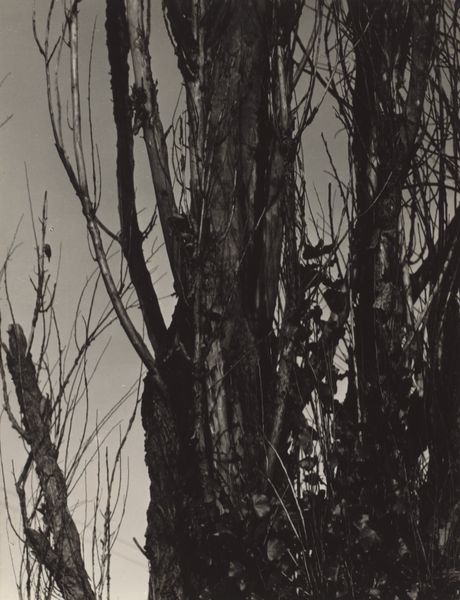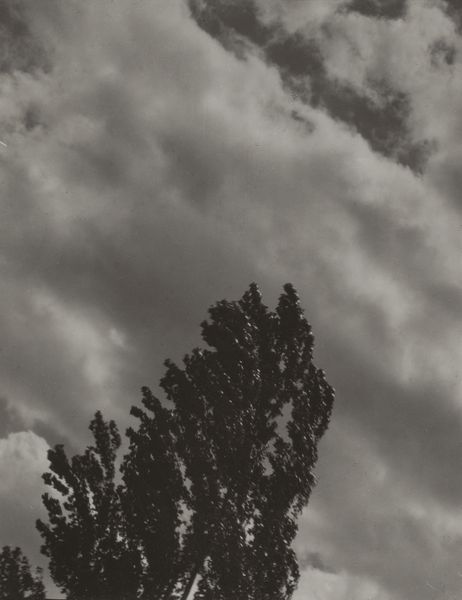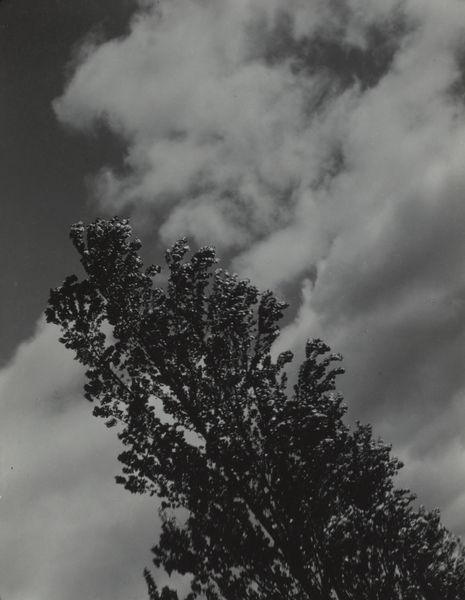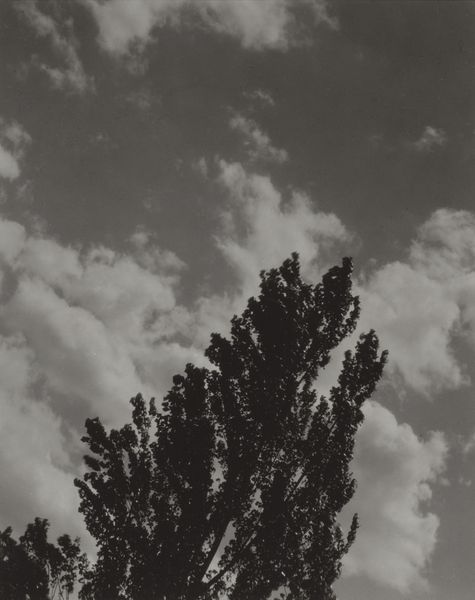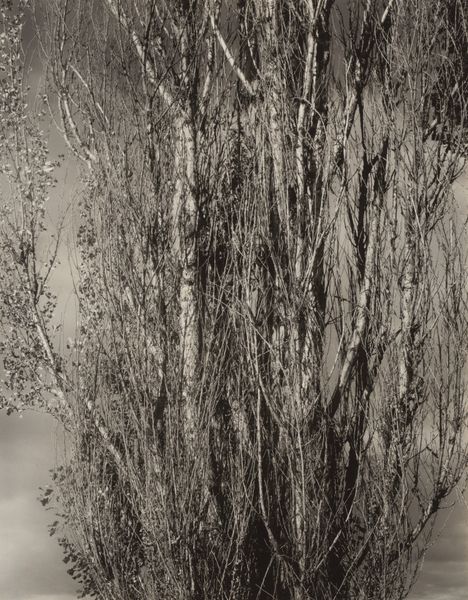
#
cloudy
#
natural shape and form
#
black and white photography
#
snowscape
#
black and white format
#
warm monochrome
#
monochrome photography
#
gloomy
#
monochrome
#
shadow overcast
Dimensions: image: 19.8 × 13.3 cm (7 13/16 × 5 1/4 in.) sheet: 35.5 × 28 cm (14 × 11 in.)
Copyright: National Gallery of Art: CC0 1.0
Editor: This is Robert Adams' "Baker County, Oregon," a black and white photograph taken between 1999 and 2002. I find the tonality to be heavy, especially in the lower portion of the image; this feels rather ominous and gloomy. What social factors might have influenced its creation or reception? Curator: That's an astute observation. Adams, throughout his career, documented the impact of human activity on the American West. His stark monochrome images often served as a commentary on land use, resource extraction, and suburban sprawl. This work may allude to those issues in the county or a universal representation. Editor: So the “gloomy” feeling I perceived might reflect a deeper anxiety about environmental degradation? Curator: Precisely. The high-contrast presentation directs your eyes in different locations on the image that are each individually impacted differently. How do you feel that these areas contrast with the brightness towards the upper regions of the frame? Editor: It presents a tonal shift. With the darkness, I feel like the natural imagery conveys a message about deforestation and conservation. Is this a common theme in photographic work like this? Curator: Adams was influenced by earlier photographers like Timothy O'Sullivan, who documented the 19th-century American West. Like them, Adams acknowledges a tradition of portraying nature both romantically and critically. This tension—beauty versus exploitation—became a powerful aspect of his photographs and what institutions were willing to accept. What is left to interpretation depends on social factors. Editor: That tension is definitely palpable. I had originally only viewed it in an aesthetic light. This helps me appreciate how social and historical lenses shape the work. Curator: Absolutely, art and how we view it constantly shifts with current values!
Comments
No comments
Be the first to comment and join the conversation on the ultimate creative platform.
